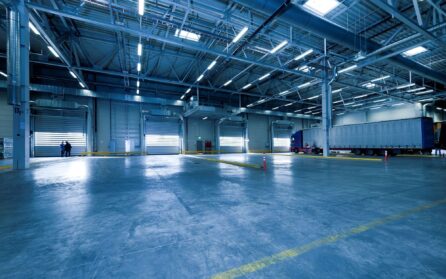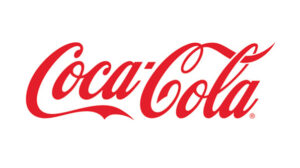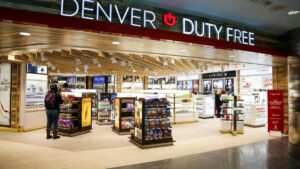Blog
Understanding Customs – Bonded Warehouses & Foreign-Trade Zones

When President Donald Trump announced in January 2018 that tariffs would be increased on washing machines and solar panels, few realized the action was the first volley in what would become a full-blown exchange of retaliatory tariffs between the United States and China. By late 2019, the scope of tariffs had grown to include an estimated $500 billion in industrial and consumer goods, including cell phones, sports equipment, and footwear.
Faced with the fallout from these tariffs — some as high as 30 percent — many U.S. manufacturers and retailers began to look for ways to mitigate the impact on their businesses. An August 2019 report by National Public Radio featured one hiring specialist who said there had been a “noticeable spike” in companies looking to hire tariff specialists and supply chain experts. “Any time that the economic situation is becoming more complicated or more volatile, companies who figure out how to take advantage are going to move ahead,” the expert, Martha Gimbel of the Indeed Hiring Lab, explained.
Indeed, many companies have attempted to avert fallout from the increased tariffs through various methods. Some have shifted manufacturing operations out of China, with CNBC reporting at least 50 U.S. multinationals including Apple, Hewlett-Packard, and Dell had already moved at least some production to Southeast Asian countries.
Uprooting production though, especially within a very short time frame, is costly and therefore not an option for most businesses. Instead, as Bloomberg reported, companies are increasingly turning to more creative options, including “tariff engineering,” which refers to instances where companies make minimal adjustments to products, but enough to qualify for an adjusted, more favorable classification rate. Bloomberg’s reporting cites a historical example in which an importer “colored sugar with molasses to avoid higher duties.” Such blatant attempts at avoiding higher tariffs though — a process referred to as “existing in a legal gray-zone” by Customs and International Trade Law — will often set off red flags among trained U.S. Customs and Border Protection (CBP) agents and may result in stiff penalties or a costly audit review.
Coca-Cola was among the companies cited by the Cato Institute as being adversely affected by recent tariff increases. According to Cato: “The soft drink maker raised prices for soda and other beverages to offset tariffinduced price increases for freight shipments and metals used in its bottling system.”
A better option might be to take advantage of long-established — and highly reputable — customs bonded warehouses or foreigntrade zones (FTZs). Both are authorized by the federal government and allow businesses to manage tariff responsibilities. Customs bonded warehouses allow importers to store foreign goods for as long as five years, with no duty owed until the goods leave the facility. “The warehouse can be used either to manage cash flow by spreading the duties over time,” the Financial Times reported, “or to pay lower rates if tariffs are reduced at a later date.”
Foreign-trade zones (FTZs) are defined by CBP as “secure areas located in or near U.S. ports of entry. Legally, FTZs are considered to be outside the customs territory of the U.S. for duty assessment and entry purposes.” Importers may store foreign or domestic goods within an FTZ and avoid customs filings and duties so long as the goods remain within the zone.
Bonded warehouses and FTZs provide significant benefits, including delayed customs payments and the ability to re-export goods without penalties. However, a business considering taking advantage of either must have an understanding of the differences between the two and potential implications for its operations. Use of these facilities does not make sense for every business but can be extremely beneficial, for example, for a business that relies heavily on imported goods.
Following is an overview of foreign-trade zone and bonded warehouse “basics” that can help a business determine if either approach might be a viable strategy worth pursuing.
What Is a Customs-Bonded Warehouse?
The U.S. Customs and Border Protection (CBP) agency defines a bonded warehouse as “a building or other secured area in which imported dutiable merchandise may be stored, manipulated, or undergo manufacturing operations without payment of duty for up to five years from the date of importation.”
Further, CBP notes, “upon entry of goods into the warehouse, the warehouse proprietor incurs a liability for the merchandise under a warehouse bond.” This liability is generally cancelled when the merchandise is:
- Exported
- Withdrawn for supplies to a vessel or aircraft
- Destroyed under CBP supervision, or
- Withdrawn for consumption within the United States after payment of duty.
Bonded warehouses are under CBP’s supervision, and merchandise entering a facility must be accounted for via strict record-keeping and documentation requirements. Merchandise in a bonded warehouse is considered to have not made entry into U.S. commerce and is secured by the bond on the warehouse.
11 “Classes” of Bonded Warehouses
Currently, CBP maintains 11 different “classes” of bonded warehouses:
- Class 1: Premises owned or leased by the government, used for the storage of seized merchandise undergoing examination by CBP, pending final disposition.
- Class 2: Importer’s private warehouse used exclusively for the storage of merchandise belonging to, or consigned to, the proprietor.
- Class 3: Public bonded warehouse used exclusively for the storage of merchandise imported or subject to IRS tax. This bonded warehouse is generally available to any importer at the discretion of the proprietor. A proprietor may impose restrictions on the use of the bonded warehouse by importers, including allowing the exclusive use of the bonded warehouse by one importer.
- Class 4: Bonded yards or sheds for the storage of heavy and bulky imported merchandise; stables, feeding pens, corrals, other similar buildings or limited enclosures for the storage of imported animals; and tanks for storage of imported liquid merchandise in bulk.
- Class 5: Bonded bins or parts of buildings or elevators to be used for the storage of grain.
- Class 6: Bonded warehouses established for the manufacture in bond, solely for exportation, of articles made in whole or in part of imported materials or of materials subject to IRS tax; and for the manufacture for domestic consumption or exportation of cigars made in whole of tobacco imported from one country. (Although, CBP notes, there are currently no Class 6 warehouses for the manufacture of cigars in the United States.)
- Class 7: Bonded warehouses established for smelting and refining imported metalbearing materials for exportation or domestic consumption.
Duty-free stores, common sights in airport terminals, are a type of customs bonded warehouse.
- Class 8: Bonded warehouses established for the cleaning, sorting, repacking, or otherwise changing the condition of, but not the manufacturing of, imported merchandise, under CBP supervision, and at the expense of the proprietor.
- Class 9: Bonded warehouses, known as “duty-free stores,” used for selling conditionally duty-free merchandise for use outside the customs territory. Merchandise in this class must be owned or sold by the proprietor and delivered from the warehouse to an airport or other exit point for exportation by, or on behalf of, individuals departing from the Customs territory or foreign destinations. These stores may also sell items other than duty-free merchandise. A direct-ship vendor solution, in which a retailer owns some of its inventory, is essentially a hybrid of a traditional “drop ship” model, in which the retailer holds no inventory. In a DSV solution, a retailer only off-loads fulfillment for certain products and vendors.
- Class 10: Bonded warehouses for international travel merchandise, goods sold conditionally duty-free aboard aircraft and not at a duty-free store.
- Class 11: Bonded warehouses established for the storage of General Order (GO) merchandise. According to Investopedia, GO merchandise refers to imported goods that are missing proper documentation or cannot be quickly cleared through customs. Goods are held under General Order if they remain uncleared for more than 15 days. After 15 days, GO merchandise is moved to a Class 11 bonded warehouse, and after six months, will be confiscated by the government or put up for an auction run by CBP.
A bonded warehouse may be designated as more than one class, according to CBP, provided that it meets all the requirements of each of those classes.
Where are Bonded Warehouses Located?
Bonded warehouses are located throughout the United States and generally accessible to interested businesses. Many logistics companies, for example, maintain bonded warehouses and advertise their services to potential customers.
In some instances, a private company may decide to have a portion of an existing facility designated as a bonded warehouse. However, analysis by Neville Peterson LLP notes, care must be taken to ensure “the bonded and non-bonded areas are sufficiently separated by substantial materials that render it impossible for unauthorized personnel to enter the bonded area.” To keep the bonded and nonbonded areas separate, a proprietor must erect partitions that meet precise CBP standards.
Activities Permitted in a Bonded Warehouse
Certain activities — referred to as “manipulations” — may be performed on products held in a bonded warehouse, provided the condition of the goods is not fundamentally altered. This is a critical distinction, since manufacturing activities are not allowed (unless goods are intended for export). An importer must take care to ensure any actions fall within the scope of allowable “manipulations” and do not constitute a manufacturing activity. This can be somewhat complicated, since CBP acknowledges there is “no precise definition of manipulation.”
According to CBP, allowable activities include:
- Cleaning, sorting, or repackaging
- Simple packing or unpacking
- Dismantling or disassembly
- Opening containers for viewing, exhibition, or sampling
- Labeling, tagging, or insertion of instructional or sales brochures
- Sorting, grading, or separation of damaged-from-good-order merchandise
When there is any doubt as to whether a certain process constitutes a “manipulation” versus “manufacturing,” an importer should request an opinion or binding ruling from CBP before allowing the procedure in question to take place.
Advantages of Using a Bonded Warehouse
CBP cites several benefits of using a bonded warehouse, including:
- Duty deferral. Duty is not collected until merchandise is withdrawn from the warehouse. This allows an importer greater flexibility in managing cash flow.
- Long-term storage solution. Imported goods can be stored in a bonded warehouse for up to five years. Depending on a business’s specific needs, this can provide a viable solution for short-and-long-term inventory management.
- Ability to export unsold goods. If no domestic buyer is found for the imported goods, the importer can export the goods, thereby eliminating any obligation to pay duty. This duty-free status also applies to goods intended for re-exportation.
- Potential for reduced tariff obligations. If the rate of tariff for a particular product is reduced while the item is stored in the warehouse, the reduced rate will apply when the product leaves the warehouse.
- Duty on manipulated goods. Duties owed on articles that have been manipulated while in the warehouse are determined at the time the products are withdrawn from the warehouse.
- Ability to store “restricted” items. Many items subject to quota or other restrictions may be stored in a bonded warehouse. A business should consult with a CBP office to ensure the eligibility of such merchandise prior to placing it in the warehouse
Foreign-Trade Zones vs. Customs-Bonded Warehouses — Key Differences
While FTZs and bonded warehouses have many similarities — namely the ability to defer duty payments — each has distinguishing characteristics that may affect viability for a particular business. The National Customs Brokers & Forwarders Association of America (NCBFAA) summarizes the two entities as follows:
- Foreign-trade zones are frequently used for storage, testing, cleaning, processing, assembling, manufacturing, relabeling, repackaging, displaying, exhibition, and repairing of merchandise.
- Bonded warehouses are generally used for the storage of imported merchandise entered for warehousing, placed in General Order, or for the manipulation of merchandise in-bound.
Within these two categories, specific differences include:
- Time limits. Goods may only be held in a bonded warehouse for five years, whereas they can be held indefinitely in an FTZ.
- CBP authority. Bonded warehouses are under the direct control and supervision of CBP, while FTZs are not. This means CBP maintains authority with regard to movement of goods held in a customs warehouse.
- Foreign vs. domestic goods. Only foreign goods are allowed to be stored in bonded warehouses. An FTZ may include both domestic and foreign merchandise.
- Entry payment. Entry must be paid at the time goods enter a bonded warehouse. Entry payment is only paid when goods held in an FTZ enter U.S. commerce.
- Duty payment. Duties are paid when goods exit the FTZ and enter U.S. commerce. Similarly, duties are not paid until withdrawal from a bonded warehouse.
- Allowable activities. Manufacturing processes are permitted in an FTZ, but not in a bonded warehouse.
- Ease of withdrawal or removal. Because merchandise stored in a bonded warehouse is under CBP authority, the agency must authorize the removal of any goods. This requires compliance with required documentation. In addition, shipments stored in a customs warehouse must be withdrawn in their entirety, rather than as a series of partial “as-needed” removals. A business seeking to withdraw a partial quantity must obtain CBP permission. Goods stored in FTZs, on the other hand, can be withdrawn with few limitations.
Given the nuances between FTZs and bonded warehouses, a business will need to consider its unique circumstances and goals in determining which option would be most beneficial. “Bonded warehouses are available for repositioning, consolidation and deconsolidation, and light manipulation, although they are not appropriate for most manufacturing activities,” noted analysis by Benesch Friedlander Coplan & Aronoff LLP. “FTZs are available to satisfy manufacturing needs in addition to the many benefits offered by bonded warehouses and offer ease of withdrawal, although they are subject to greater regulation.”
Conclusion
Although the current trade war has heightened attention on the role of tariffs in international trade, seasoned businesses have long understood the importance of managing — indeed mitigating — the impact tariffs can have on business costs.
For tens of thousands of businesses, this has meant incorporating FTZs or bonded warehouses into their trade strategies as a way to defer and manage duty payments. The U.S. Congress authorized these entities — FTZs in 1934, and bonded warehouses in 1930 — specifically to expedite and encourage international commerce.
Since then, companies have reaped significant benefits. A 2019 analysis by the National Association of Foreign-Trade Zones, for example, found employment, wage, and value-added increases among communities with established FTZs. BMW noted that its FTZ operations directly and indirectly add $6.3 billion annually to the state of South Carolina, and they have led to the employment of more than 36,000 people in the state. Nationwide, BMW says it has added almost $16 billion in value and helped create 120,000 jobs.
As FTZs and bonded warehouses receive a fresh look, businesses may realize the benefits afforded through these options may provide a new path forward in managing their trade strategies.
Purolator. We deliver Canada.
Purolator is the best-kept secret among leading U.S. companies who need reliable, efficient, and cost-effective shipping to Canada. We deliver unsurpassed Canadian expertise because of our Canadian roots, U.S. reach, and exclusive focus on cross-border shipping.
Every day, Purolator delivers more than 1,000,000 packages. With the largest dedicated air fleet and ground network, including hybrid vehicles, and more guaranteed delivery points in Canada than anyone else, we are part of the fifth-largest postal organization in the world.
But size alone doesn’t make Purolator different. We also understand that the needs of no two customers are the same. We can design the right mix of proprietary services that will make your shipments to Canada hassle-free at every point in the supply chain. Contact us today!

